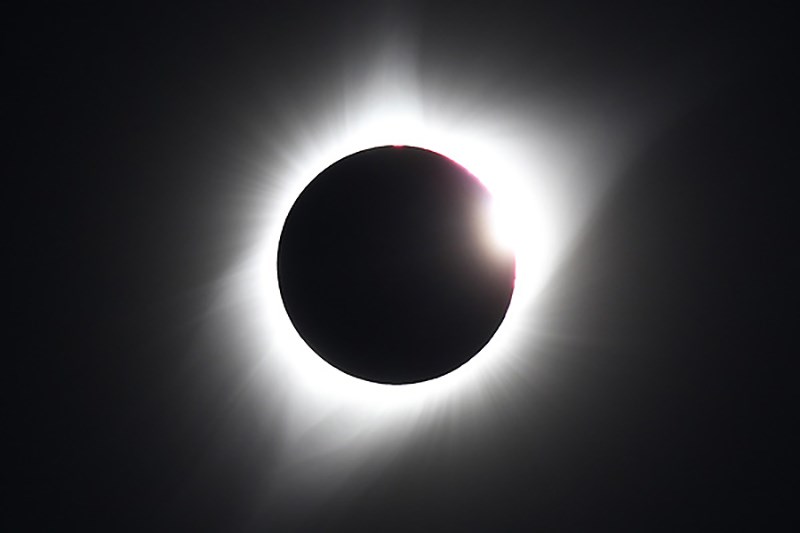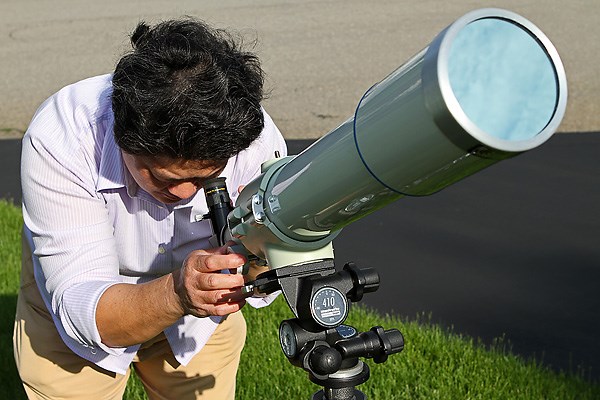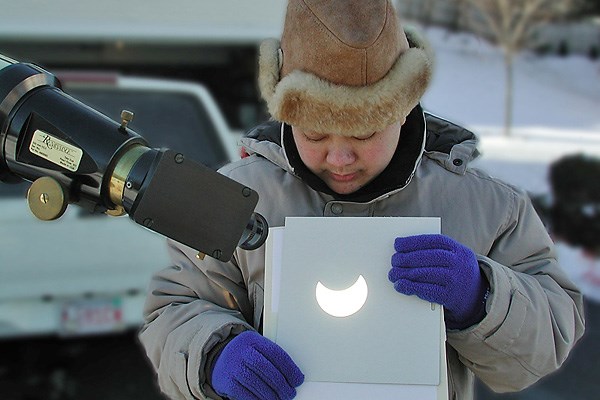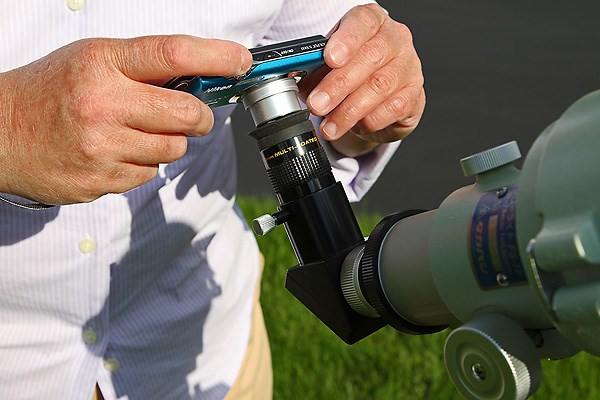Here Are Some Tips on How to Safely Observe and Photograph the Eclipse
 Image by Imelda Joson and Edwin Aguirre
Image by Imelda Joson and Edwin Aguirre
This view of the sun’s corona, or outer atmosphere, was captured during the total eclipse of August 21, 2017 from Riverton, Wyoming.
03/20/2024
By Edwin L. Aguirre
Across the country, people are gearing up for the April 8 total solar eclipse, which will be visible in North America along a narrow track that stretches from Mexico through Texas and across the Midwest and New England before ending in the Canadian Maritimes.
If the weather is clear, people positioned along that path will be able to see the moon completely block the sun for up to 4½ minutes, briefly turning day into night. The rest of North America, Central America and northern South America will be treated to a partial eclipse of varying degrees.
 Image by Imelda Joson and Edwin Aguirre
Image by Imelda Joson and Edwin Aguirre
This sequence shows the total solar eclipse on March 29, 2006 as seen from El Salloum, Egypt, next to the border with Libya.
According to the GreatAmericanEclipse.com, an estimated 32 million people, or 9.6% of the nation’s population, already live inside the U.S. path of the April eclipse, and tens of millions more reside within a couple of hours’ drive of its track, making it likely to be the most widely watched – and photographed – total solar eclipse in history.
What Eclipse Watchers in Lowell Can Expect
Parts of New York, Vermont, New Hampshire and Maine lie within the path of the total eclipse.
However, people outside the path, such as those in Massachusetts, Connecticut and Rhode Island, will still be able to watch a deep partial eclipse unfold from practically anywhere, provided they have a clear, cloud-free view of the sun.
 Image by Joson Images
Image by Joson Images
If you would like to view the partial eclipse through a telescope, be sure to securely mount a safe solar filter in front of your optics.
As the partial eclipse reaches maximum coverage, the sky will darken dramatically. However, the remaining 6 percent of the sun will still be blindingly bright, so viewers should take the necessary precautions to avoid damaging their eyes.
Tips on Observing and Photographing the Partial Eclipse Safely
There are some important things to keep in mind when trying to view a partial solar eclipse.
First, never look directly at the sun without proper eye protection, such as eclipse viewing glasses or a solar filter for your camera, binoculars or telescope. Failure to do so can result in serious eye injury or permanent blindness. A No. 14 arc-welder’s glass filter is also acceptable, but ordinary sunglasses and polarizing or neutral-density filters used in regular photography are not safe and should not be used.
You can purchase inexpensive but safe eclipse viewing glasses, or “eclipse shades,” from companies such as Celestron. The glasses will not only help cut down the sun’s brightness, but they will also block out its harmful ultraviolet and infrared radiation.
 Image by Joson Images
Image by Joson Images
You can use an unfiltered telescope (or one side of your binoculars) to project a magnified image of the sun’s disk onto a shaded sheet of paper. The projected image can be safely viewed and photographed.
When the partial eclipse is about halfway, you can also look under leafy trees (these may be hard to find in April) or evergreens. The tiny spaces between the leaves or needles act as natural pinholes, projecting dozens of small solar crescents on the shaded ground. Lay down a white blanket or T-shirt to see and photograph the crescents better. Everyday items with small perforations, such as a colander or other kitchen utensils, can be used to project the solar crescents.
If you want a brighter, sharper solar image, use an unfiltered telescope (or one side of your binoculars) to project a magnified image of the sun’s disk onto a sheet of paper. The projected image can then be safely viewed and photographed. Be sure to cover the telescope’s finder scope and the unused half of the binoculars.
To shoot the partial eclipse through a telescope or telephoto lens, be sure to securely mount a safe solar filter in front of your optics. You can order the correct size of filter from manufacturers such as Celestron.
 Image by Joson Images
Image by Joson Images
Always use proper eye protection when observing or photographing the sun. Failure to do so can result in serious eye injury or permanent blindness.
A better way would be to shoot through a properly filtered telescope. Many science museums, planetariums, astronomy clubs and schools, such as UMass Lowell’s Schueller Observatory on South Campus, will be offering free public solar viewing on April 8. To capture the eclipsed sun through one of the filtered telescopes that day, hold your camera or smartphone and aim its lens directly into the telescope eyepiece. Use the LCD screen to center the sun and zoom in as needed. You can use the camera’s auto-focus and auto-exposure settings, and try to hold the camera as steady as you can while clicking the shutter button.
If you want to use a full-size digital SLR camera on your own telescope, you should attach the camera body securely to the telescope focuser using an appropriate adapter for your camera brand (check with your local camera retailer). To minimize vibrations that could blur your images, use an electronic cable release or remote switch to operate the shutter.
If you miss April’s solar eclipse, you’ll have to be patient for your next opportunity to experience one: The next total eclipse of the sun will not be visible on the U.S. mainland until the year 2044.
